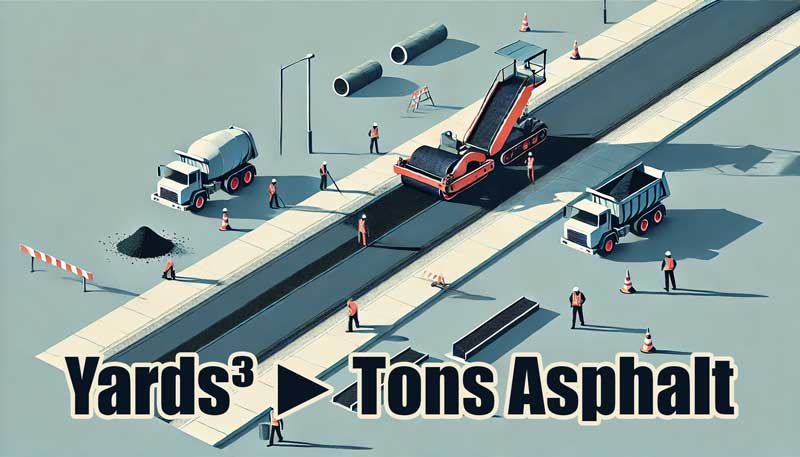This online Yards3 to Tons of Asphalt converter is designed to help users convert between cubic yards and tons of asphalt. It provides quick, precise results based on the density of asphalt, and users can also manually adjust the density for different types of materials if needed. The calculator works both ways, meaning you can input values in either cubic yards or tons, and it will calculate the equivalent value automatically.
Cubic Yards to Tons (Asphalt) Converter
This tool converts between cubic yards and tons for asphalt automatically. You can enter values in either field, and the calculation will be done both ways.
The default density is set for asphalt (crushed). Adjust the density if needed.
How to Use the Calculator
To use the calculator, simply enter a value in the cubic yards field if you have the amount in cubic yards, or in the tons field if you know the weight in tons. The conversion is done automatically as soon as you input one of these values. You can also modify the density field if you are working with a different type of asphalt or material. Adjust the number of decimal places if necessary. When finished, click the “Clear All” button to reset the form.
Formula
The formula to convert cubic yards of asphalt to tons is simple:
For example, if you have 2 cubic yards of asphalt and the density is 0.61 tons/yd³ (crushed asphalt), the calculation would be:
2×0.61=1.22 tons
To convert from tons to cubic yards, simply reverse the calculation.
Precalculated Values
- 1 cubic yard of crushed asphalt = 0.61 tons
- 2 cubic yards of crushed asphalt = 1.22 tons
- 5 cubic yards of crushed asphalt = 3.05 tons
- 10 cubic yards of crushed asphalt = 6.10 tons
- 15 cubic yards of crushed asphalt = 9.15 tons
- 20 cubic yards of crushed asphalt = 12.20 tons
- 25 cubic yards of crushed asphalt = 15.25 tons
These values are based on the default density of crushed asphalt, which is approximately 0.61 tons/yd³. Adjust the density for different types of asphalt if needed.

Asphalt paving
History and Interesting Facts
Asphalt has been used for road construction since ancient times. The use of natural asphalt goes back as far as the 6th millennium BCE, but modern asphalt, known as bitumen, became more widespread in the late 1800s. The density of asphalt can vary depending on its composition and whether it is crushed, mixed with other materials, or liquid. This makes accurate calculations essential when working with large volumes of material.
© CalcuLife.com








Leave A Comment